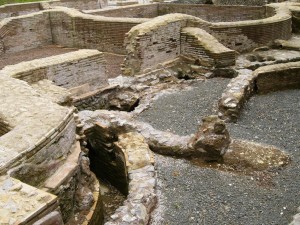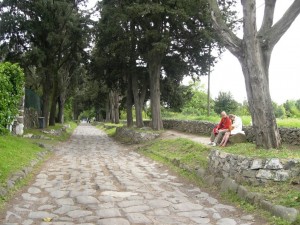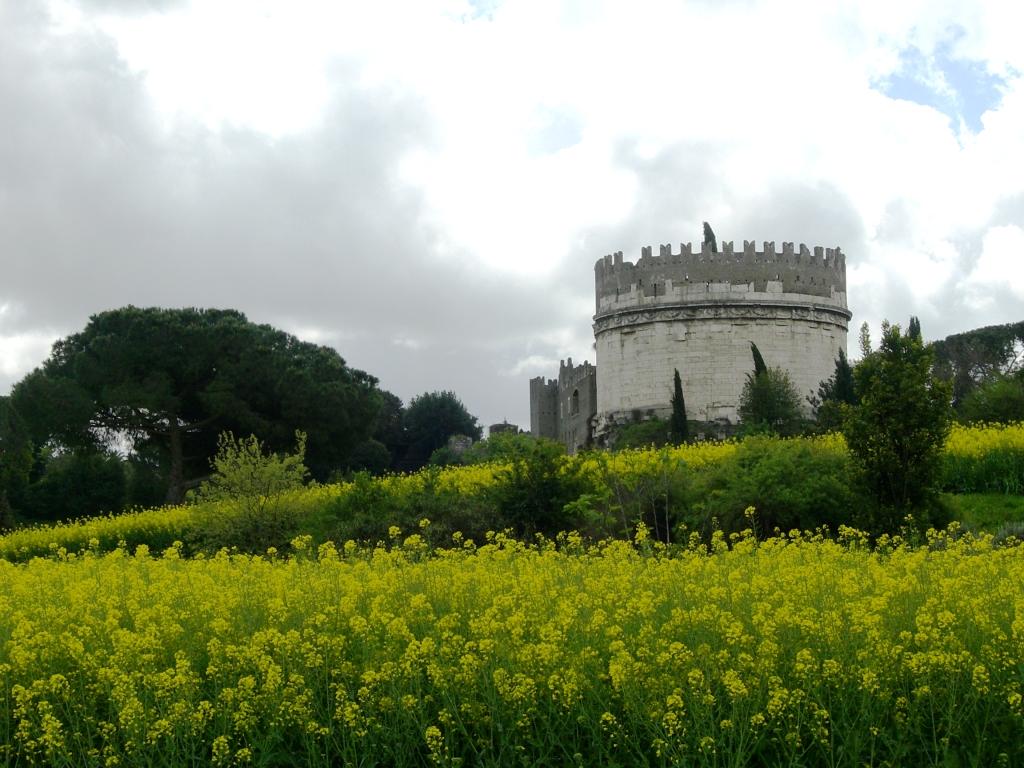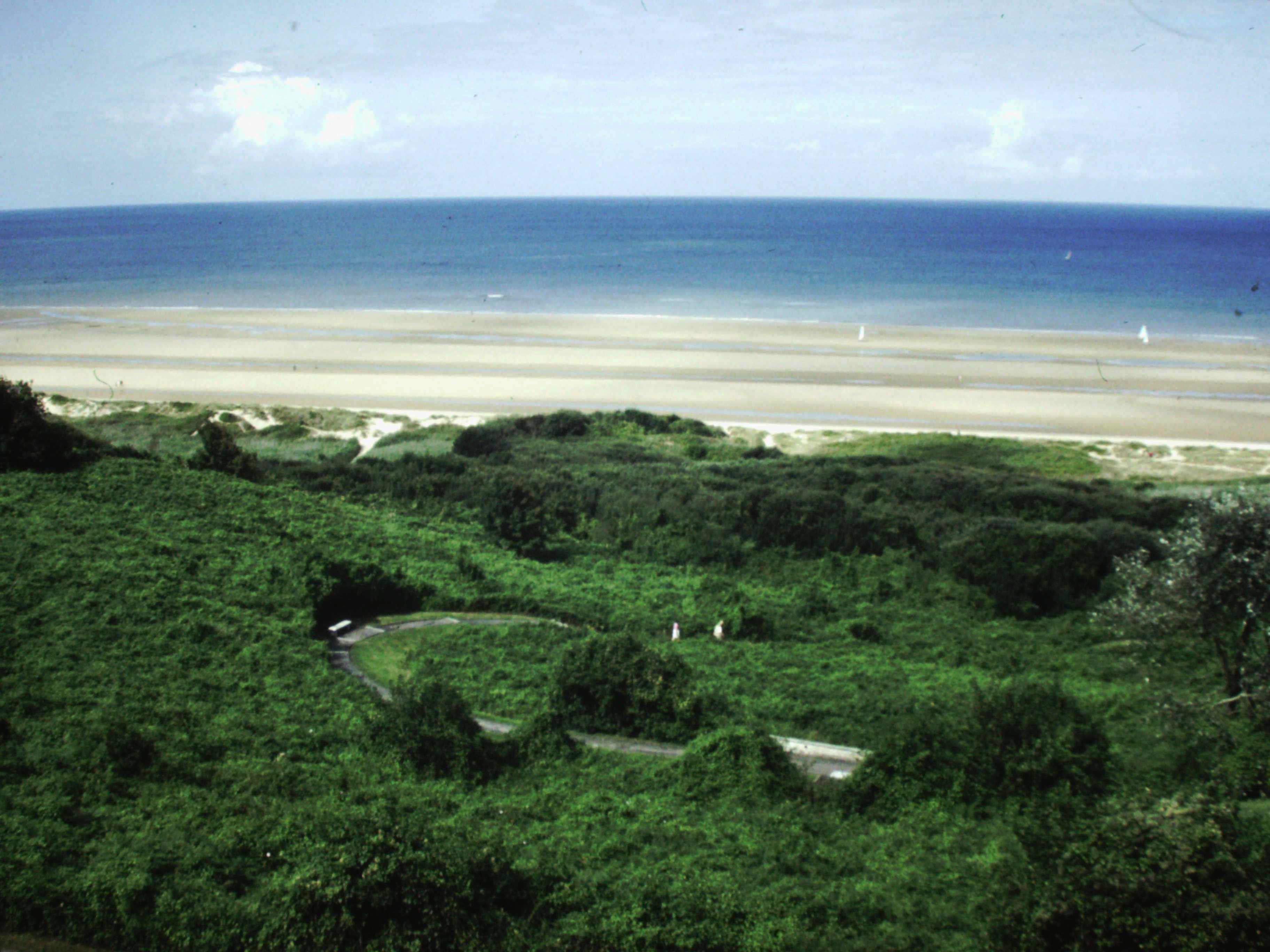Italian donkeys and American donkeys speak the same language. I learned this in a field in the middle of Rome, within a few minutes cab ride of the Colosseum.
Actually, it was a farm, a sort of bucolic oasis within sight of the city skyline. And, this being Rome, the farm contained not only donkeys and sheep and horses and crops, but 2,000 year old ruins.
In Your Bucket Because…
- This off-the-beaten track park has fascinating history, without the crowds.
- It’s a breath of fresh air, and an example of one of the most unusual city parks in the world.
- The catacombs are downright creepy, but impressive at the same time.
- Good for history buff, nature lovers, and those who like to wander off the “top 10” lists once in a while.
I was visiting the Parco Regionale dell’Appia Antica, one of the world’s most remarkable urban parks. Beginning at the Porta San Sebastiano, just two miles from the Colosseum, the Appian Way starts as a traffic clogged artery (don’t even try to walk here). But a few kilometers later, it leads into a patchwork of recreational, agricultural, and historic lands that contains everything from working farms to seven ancient Roman Aqueducts, the ruins of tombs, Roman baths, catacombs, hiking trails, bike paths, the trees that inspired Resphigi’s Pines of Rome, and wildlife including 73 bird species and 15 species of mammals.
The Via Appia Antica: The Old Appian Way

The backbone of the park is the Via Appia Antica (the old Appian Way), a military road hat an from ancient Rome to the Adriatic port of Brindisi in southeast Italy. Construction was initiated in 312 B.C., more than 300 years before the risen Jesus is said to have met St. Peter on a road — this road — to Rome. The so-called “Queen of Roads,” the Appian Way is the reason we say “all roads lead to Rome.”
After construction, the lands surrounding Via Appia near Rome became a sort of necropolis. Burials were not permitted within Rome’s city limits, so the rich and priveleged built massive tombs just outside the city gates. Below ground, Christians buried their dead in long tunnels carved out of the soft tufa just beneath the surface. They also held secret services during times of persecution.
At 3,500 hectares, the park is far too massive to be explored or understood in a short visit. So it’s an interesting comment on “top 10” lists that the Appia Antica is often overlooked. Only the occasional catacomb tour manages to compete with the predictable standards (Colosseum, Forum, St. Peters, Vatican, Pantheon, Trevi Fountain, Spanish Steps). “Taste authentic Roman pizza” and “dip into a refreshing gelatto” are found on most “what to do in Rome” lists ahead of this remarkable park.
This is worth noting, because visiting Rome in high season — Easter, school breaks, or summer — can feel like you’ve been put on the downward escalator to the ninth circle of tourist hell. Certainly the Vatican and the Colosseum were worth the lines, but after hours of jostling with my fellow tourists to get a glimpse of the Pieta and the paintings in the Vatican, it was a welcome change of pace to find myself in a monument so deserted my voice echoed against the damp stone walls.
Not to mention that with the quiet came a sense of age and history. The all-but-deserted monuments and ruins are set into a green landscape that might not be dissimilar to what St. Peter might have seen 2,000 years ago.
Historic Highlights Along the Appian Way

Literally hundreds of historic artifacts are lined up on either side of the road, and you could easily spend a few days exploring the park. But most visitors have a limited time budget, so here are some highlights.
Church of Domine Quo Vadis. This is where St Peter is said to have met Christ, and the church has what some call proof, a marble slab with two grooves that are believed to be the impressions of Christ’s feet. (The slab you’ll see here is actually a copy, but the original exists, kept in the Church of San Sebastiano, just to the south.)
Catacombs. Three churches offer catacombs tours. The Catacombs of St. Callixtus is the burial site of nine early popes and some early saints, and has impressive tunnels, one of which is some 70 feet high and 7 feet wide. (Take a moment to imagine those dimensions: It’s pretty impressive.) It also attracts the largest tour groups. The Catacombs of San Sebastiano are the longest, with 7 miles of tunnels. The Catacombs of Domitilla are the most modest but offer one of the more engaging tours; you might even be handed a bone to examine. The tombs close on different days of the week, so check schedules in advance if you have your heart set on one.
Circus of Maxentius. This chariot-racing field is part of a complex erected by emperor Maxentius on the Via Appia between 306 and 312 A.D. Located in open green space between the the basilica and catacombs of San Sebastiano and the tomb of Caecilia Metella, it is the best preserved Roman chariot-racing track, second in size only to the Circus Maximus, also in Rome.
Tombs. You could spend the whole day here looking at tombs, but two of the most famous are the tombs of two patrician women, Cecilia Metella (whose tomb, pictured at the beginning of this article, is near the circus Manxentius) and Priscilla, wife the powerful Titus Flavius Abascantus (near the church of Domine Quo Vadis).
The Aqueducts. Rome’s waterworks system was a match for any city in the ancient world. Remains of six of the eleven aqueducts that brought water to the city in ancient times, plus a later Renaissance period aqueduct, can be seen in the park.
The Greenway Project and the Cafarella Valley

For Romans, who encounter history every time a street is repaired or a new foundation is dug, the appeal of the park is not so much its tombs as its natural areas, and the heart of these is Cafarella Valley which is located between the Via Appia Antica and the Via Latina and which is laced with walking trails.
The Valley has been inhabited and farmed without interruption for 2,000 years, and farming and agricultural use still take place there, along with hiking, biking, and picnicking under the watchful eye, and sometimes conversation, of the horses, sheep, and donkeys.
Practicalities
You have two choices when visiting the Appia Antica: independent touring or touring with a guide. Independent travelers can easily take a bus or taxi, and even rent bikes. Ask at the park office at Via Appia Antica 42.
- Tour companies can give you a more comprehensive overview by shuttling you from one highlight to the next, and providing background and historic information, so you’ll cover more ground and pack in more informed sightseeing. This is the choice for history buffs.
- The “Archeobus” runs from Termini station and goes down the Via Appia Antica to the tomb of Cecilia Metella, with side-trips to the aqueducts and Casale Rotondo, the largest tomb on the Appian Way. The ticket is valid for multiple rides, and some discounts for related attractions are built into the fare.
- Or you can do as the Romans do, and simply pick a place to stroll or hang out. The best day for bike-riding and walking is Sunday, when the park is closed to vehicular traffic. On other days, traffic on some parts of the road can make safe walking and cycling impossible. Note that the most scenic part of the road is also a bumpy ride over ancient paving stones, sometime necessitating walking the bikes or riding on a rutted dirt shoulder — conditions that led to the poor condition of some of the rental bikes and the possibility of flat tires.
- Even if you’re touring independently, take time to collect information at the park office. There is a lot of history to understand here; some perspective will help.
Updated in 2017




Great article, Karen! I love the whole scene of the Appia Antica. I explored using the Archeobus, and really like the ability to get on and off to see sites at my own pace. There’s also a multi-language commentary on the bus using earbuds, so no blaring speakers. My only caution to those choosing that option would be to make sure of the schedule for that particular day. Italy being Italy, posted schedules are merely a suggestion!